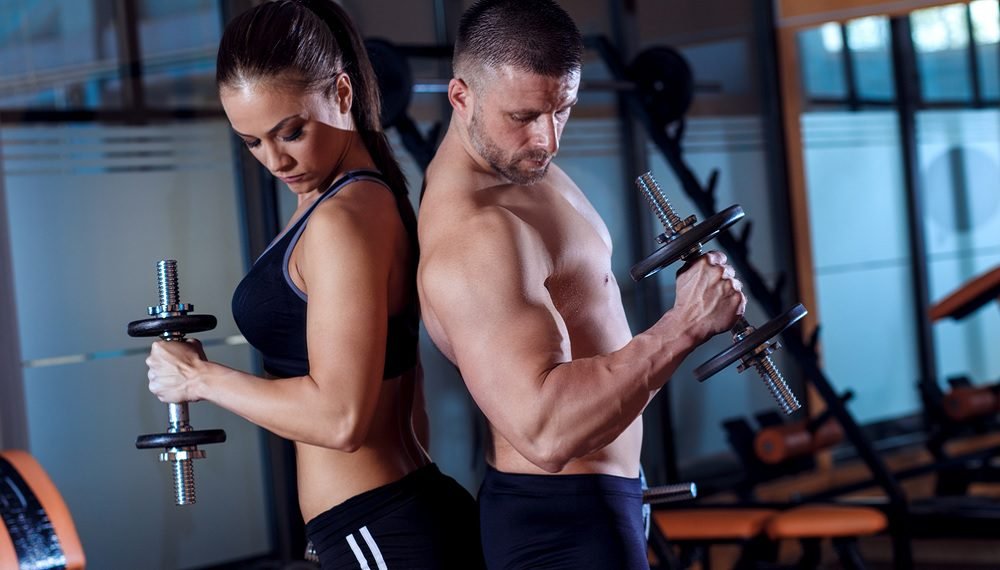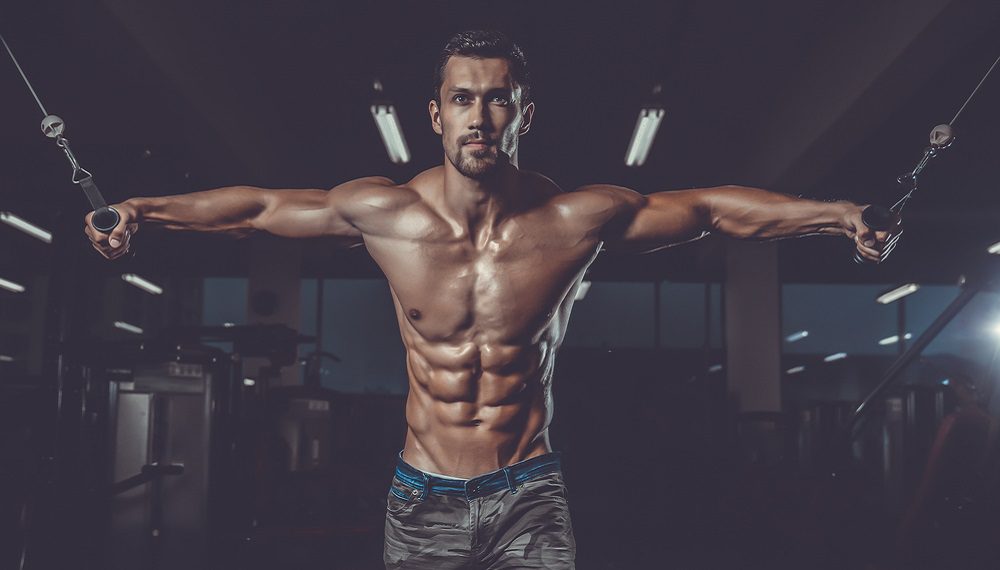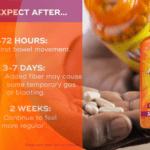Welcome to our thorough guide on the top shoulder workouts for both men and women. We have what you want, whether you want to build stronger, more etched shoulders or basically upgrade your chest area strength. The shoulders assume a vital part in different day to day exercises and fitness schedules, so focusing on their development is fundamental.
In this article, we will dive into different shoulder workouts that take special care of all kinds of people, guaranteeing that everybody can accomplish their fitness objectives. Close by every workout, we’ll give master experiences and viable tips to assist you with maximize the effectiveness of your workout training. In this way, how about we get those shoulders going and set out on an astonishing excursion to accomplish amazing outcomes!
Best Shoulder Workouts for Men and Women
1. Shoulder Press: Building the Foundation
The deltoid muscles, triceps, and upper chest are worked out during the shoulder press, sometimes referred to as the overhead press. Follow these instructions to complete this exercise:
- Stand with your feet shoulder-width separated and hold the barbell with your hands slightly wider than shoulder-width apart.
- Lift the barbell from the rack and position it at shoulder level, palms facing ahead.
- Breathe out as you press the hand weight above until your arms are completely expanded.
- Inhale as you lower the barbell back to shoulder level.
This compound movement engages multiple muscles, making it an excellent choice for overall shoulder development.
2. Arnold Press: Adding a Twist
he Arnold Press is a variation of the traditional Shoulder Press, adding a twisting motion to engage more shoulder muscles. Here’s how to perform the Arnold Press:
- Start by holding a dumbbell in each hand at shoulder level, palms confronting your body.
- As you press the dumbbells up, turn your palms from your body, so they look ahead at the highest point of the movement.
- Turn around the movement by carrying the dumbbells down to shoulder level while rotating your palms back toward your body.
This exercise recruits the front and side deltoids, providing a well-rounded shoulder workout.
3. Bent-Over Dumbbell Raises: Targeting the Rear Delts
To focus on the often-neglected rear deltoids, the Bent-Over Dumbbell Raises are highly effective. Here’s how to perform this workout:
- Hold a dumbbell in each hand and twist forward at the hips, keeping your back straight and chest lined up with the floor.
- Let your arms to hang down with your palms confronting one another.
- Breathe out as you raise the dumbbells out to the sides until your arms are lined up with the floor.
- Breathe in as you bring down the dumbbells back to the beginning position.
The Bent-Over Dumbbell Raises are essential for balanced shoulder development.
4. Lateral Raises: Isolating the Side Delts
Lateral Raises are perfect for isolating the side deltoids, helping you achieve broader and more defined shoulders. This is the way to perform Lateral Raises:
- One dumbbell should be held in each hand as you stand with your feet shoulder-width apart.
- Keep your arms slightly bent and raise the dumbbells out to the sides until they reach shoulder level.
- Slowly drop the weights back to the starting position after pausing briefly at the peak.
Make sure to keep up with control all through the movement to take advantage of this exercise.
5. Push-Ups: A Classic Bodyweight Exercise
Push-ups might be known for focusing on the chest, yet they also engage the shoulders and arms. This is the way to play out a legitimate push-up:
- Assume a plank position by positioning your hands slightly wider than shoulder-width apart.
- Gently lower your body by bending your elbows until your chest hovers just above the ground.
- Use your shoulder and arm muscles to push yourself back up to the starting position.
Push-ups are adaptable and can be adjusted to oblige different fitness levels, making them appropriate for everybody.
6. Front Raises: Focusing on the Front Delts
Front Raises isolate the front deltoids and can be performed using dumbbells or a barbell. Here’s how to do Front Raises with dumbbells:
- Stand with your feet shoulder-width apart, holding a dumbbell in each hand with palms facing your body.
- Raise one arm at a time, keeping it straight until it is parallel to the ground.
- Slowly lower the dumbbell back to the starting position, then repeat on the other side.
Front Raises help create well-defined front shoulders for a balanced appearance.
7. Upright Rows: Building Strong Traps and Shoulders
Upright Rows primarily target the trapezius and lateral deltoids, enhancing shoulder strength and stability. This is the way to perform Upright Rows:
- Stand with your feet shoulder-width apart, holding a barbell or a pair of dumbbells with an overhand grip.
- Lift the weights straight up toward your chin, keeping them close to your body.
- Lower the weights back down slowly to complete one rep.
Upright Rows are excellent for those seeking broader shoulders and well-developed traps.
8. Rear Delt Flyes: Strengthening the Posterior Shoulders
Rear Delt Flyes effectively target the rear deltoids, helping to balance shoulder development. How to do this activity is as follows:
- Begin by sitting on a bench, holding a dumbbell in each hand.
- Bend forward at the hips until your torso is almost parallel to the floor.
- With your arms slightly bent, raise the dumbbells out to the sides until your shoulders are in line with your body.
- Lower the weights back down with control to complete one repetition.
Rear Delt Flyes are crucial for overall shoulder symmetry and strength.
9. Inverted Rows: Engaging the Shoulders and Back
Inverted Rows, also known as Body Rows, target the shoulders, back, and arms. Here’s how to perform Inverted Rows:
- Set up a barbell at waist height or use TRX straps anchored at an appropriate level.
- Lie on your back under the bar or straps and grab hold with an overhand grip.
- Keep your body in a straight line and pull your chest toward the bar or straps.
- Lower yourself back down slowly to complete one repetition.
Inverted Rows are a great bodyweight exercise for building upper body strength, including the shoulders.
10. Dips: Versatile Upper Body Workout
Dips are excellent for targeting the shoulders, triceps, and chest. Here’s how to perform Dips:
- Find parallel bars or use dip bars, ensuring they are stable and secure.
- Hold onto the bars with your palms facing downward and your arms fully extended.
- Lower your body by bending your elbows until your upper arms are parallel to the ground.
- Push yourself back up to the starting position to complete one rep.
Dips can be adjusted in difficulty to suit different fitness levels, making them a versatile choice for shoulder workouts.
FAQ’s
1. Can Women Perform the Same Shoulder Workouts as Men?
Absolutely! The shoulder muscles in both men and women respond well to similar exercises. Tailoring the intensity and weight used can help accommodate individual fitness levels and goals.
2. How Often Should I Train My Shoulders?
For ideal outcomes, aim to prepare your shoulders a few times each week, with sufficient rest between sessions. This frequency allows for muscle recovery and growth.
3. Are Shoulder Workouts Suitable for Beginners?
Yes, many shoulder exercises can be adapted for beginners. It’s essential to start with lighter weights and gradually increase intensity as strength and confidence grow.
4. Can I Combine Shoulder Workouts with Other Muscle Groups?
Yes, you can integrate shoulder workouts tips with other muscle groups, especially if you follow a well-designed workout routine. However, avoid overtraining and give each muscle group enough recovery time.
5. How Long Does It Take to See Results from Shoulder Workouts?
The timeframe for visible results varies from person to person and depends on factors such as consistency, diet, and individual fitness levels. Typically, noticeable changes can be observed within a few weeks to a couple of months.
6. Should I Warm Up Before Shoulder Workouts?
Yes, warming up before any workout is crucial to prevent injuries and optimize performance. Perform dynamic stretches and light exercises to increase blood flow and prepare your shoulders for the upcoming workout.
Conclusion: Strengthen and Sculpt Your Shoulders
Congrats! You’ve presently found a plenty of viable shoulder exercises reasonable for both men and women. Make sure to keep up with legitimate form, pay attention to your body, and continuously challenge yourself to accomplish the best results.
Integrating these shoulder workout into your fitness routine can achieve more stronger, sculpted shoulders and further developed overall upper body strength. The path to a better, healthier version of yourself requires consistency and motivation.







